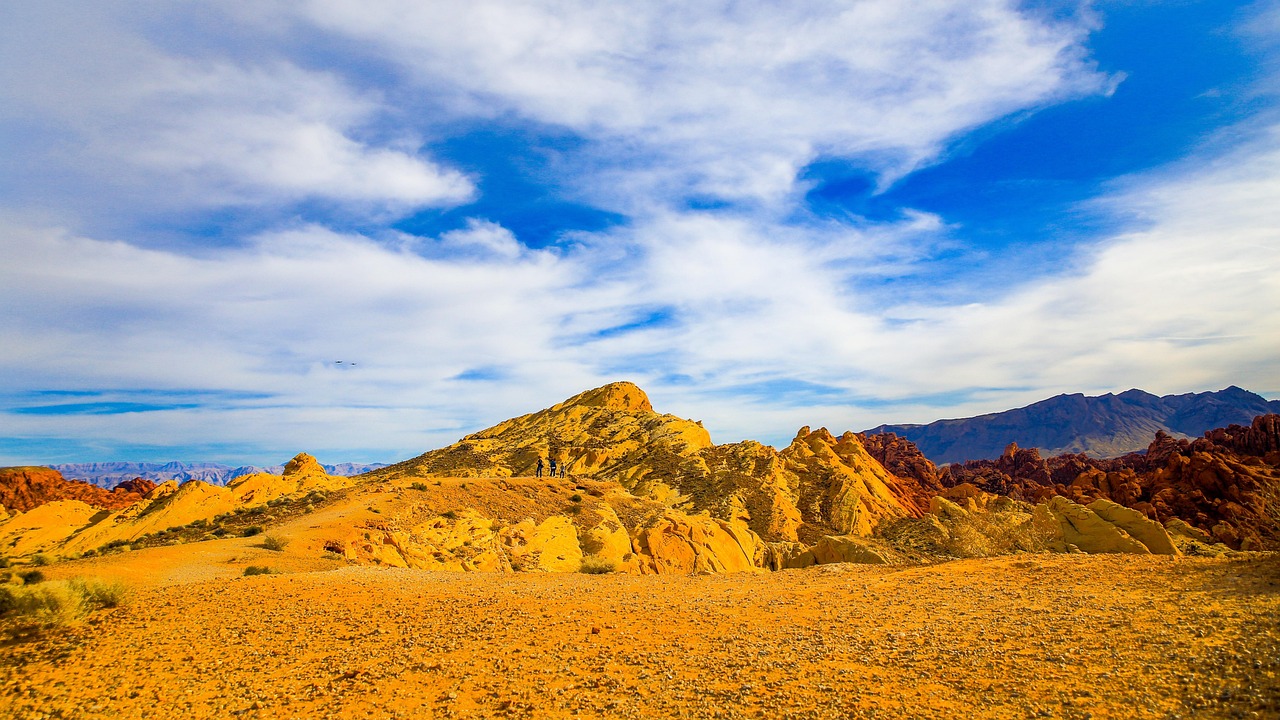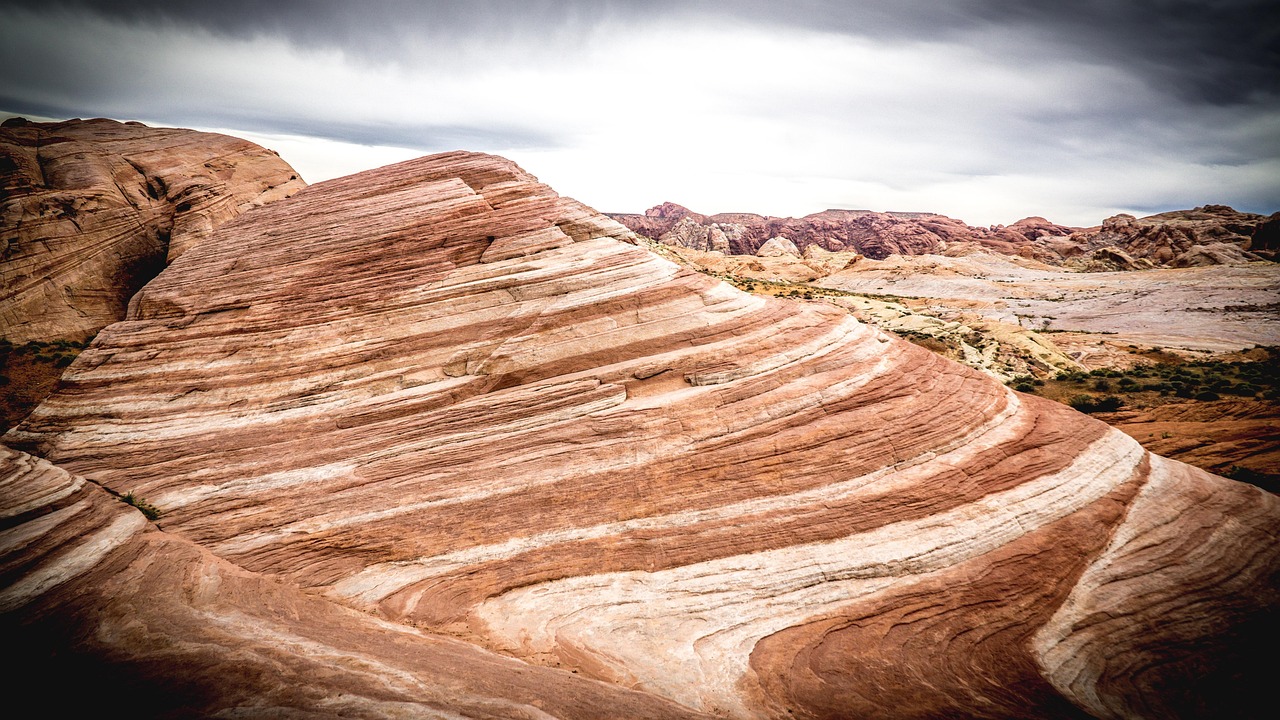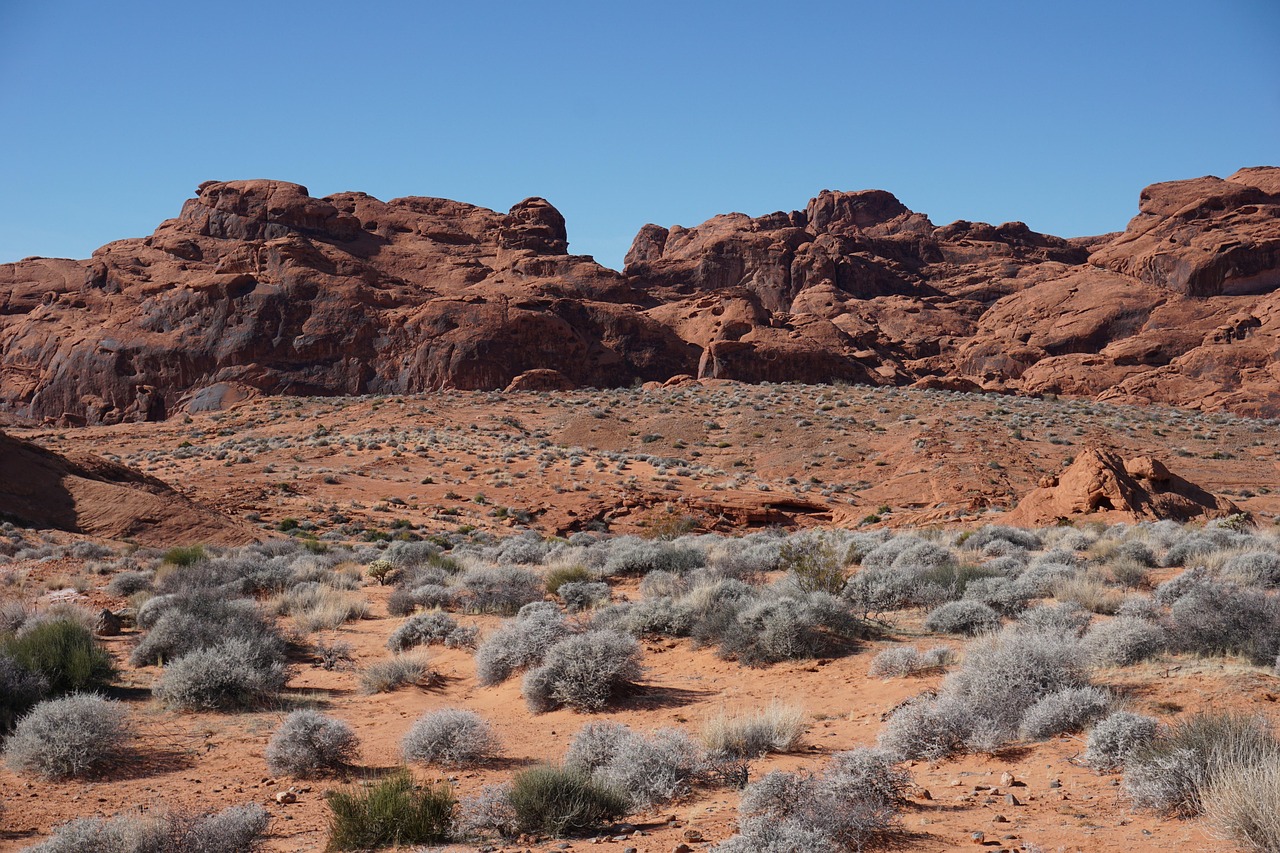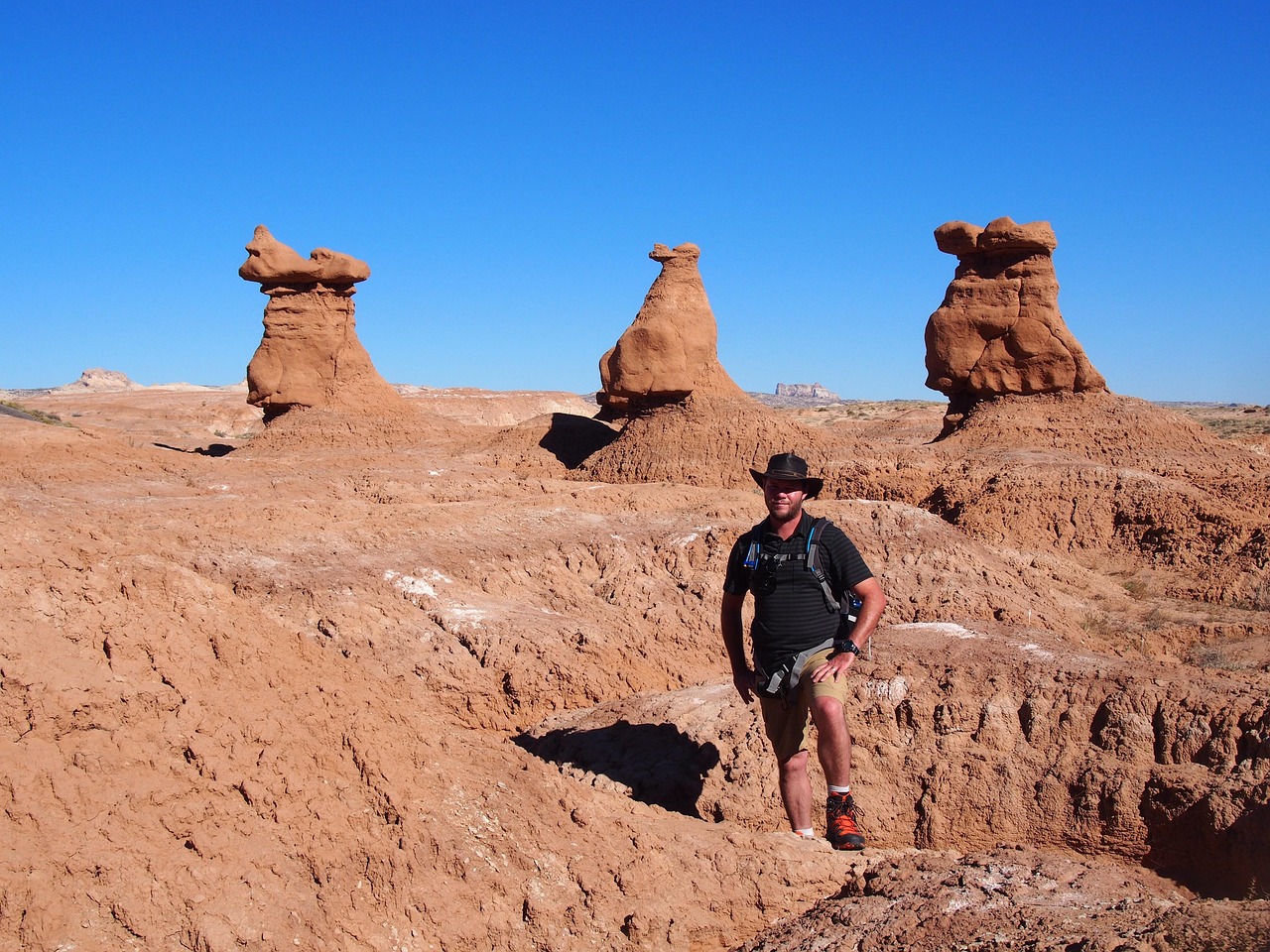Carved in fiery red, etched with ancient stories, and set in the stark Mojave Desert, Valley of Fire State Park is a place where geology speaks, and solitude lingers. From Las Vegas, the road leads you into a landscape that looks almost supernatural — cliffs and domes bathed in crimson, ancient petroglyphs telling silent tales, and the desert heat that tests your resolve.
The Making of Fire
Valley of Fire gets its name for good reason. The primary formations here are Aztec Sandstone, wind‑blown sand dunes from the Jurassic era, now hardened and sculpted into waves, folds, and spires over roughly 150 million years. Wikipedia+2Travel Nevada+2
What you see today — shimmering red rock under sunlight — is the result of shifting tectonic plates, erosion, and oxidation (rusting of iron in the rock) that gives those glowing hues. parks.nv.gov+3maverickhelicopter.com+3parks.nv.gov+3
Among the red sandstone are layers of limestone, shale, and conglomerates — a record of ancient seas, shifting climates, and tectonic force. parks.nv.gov+1

A Walk Through Time: Human Footprints
Long before the highways reached this land, people walked these rocks. Evidence shows human presence in southern Nevada dating back 11,000 years. parks.nv.gov+1
The walls here display petroglyphs carved by the Basketmaker culture, likely over 2,000 years ago, and later by ancestral Puebloans. parks.nv.gov+2parks.nv.gov+2
One of the more vivid stories local lore remembers is Mouse’s Tank — a rock basin said to be the hiding place of a outlaw named Mouse, who was tracked and killed by a posse in 1897. maverickhelicopter.com+1
In the 1930s, the Civilian Conservation Corps (CCC) was instrumental in shaping the park’s early infrastructure: roads, trails, shelters, and cabins. Wikipedia+2Cynthia and Tex+2
The park was formally established in 1935, making it Nevada’s oldest state park. parks.nv.gov+2Wikipedia+2
The Landscape You’ll Actually See
Valley of Fire spans nearly 46,000 acres (≈ 46,000 ac) in Clark County, about 16 miles south of Overton and some 50‑60 miles northeast of Las Vegas. parks.nv.gov+3Wikipedia+3ghostlypreview.com+3
Elevations within the park range from about 1,320 ft to around 2,600 ft. parks.nv.gov+3Wikipedia+3ghostlypreview.com+3
Some standout formations and sites:
-
Elephant Rock — A natural arch that resembles an elephant, very photogenic, especially near the park’s east entrance. Wikipedia
-
White Domes — A trail that winds through contrasting white and red rock, slot canyons, and ruins of old movie sets. Travel Nevada+1
-
Fire Wave — One of the most Instagrammed spots — a wave‑shaped sandstone ridge that seems to ripple across the landscape. YouTube+2Cynthia and Tex+2
-
Atlatl Rock — A rock face with carved petroglyphs and a staircase allowing closer views. Cynthia and Tex+1
Wildlife is surprisingly lively here. Expect to spot bighorn sheep, coyotes, desert tortoises, lizards, and birds adapted to desert life. maverickhelicopter.com+2Wikipedia+2
Flora is typical Mojave Desert scrub: creosote bushes, brittlebush, burro bush, and in spring, bursts of wildflowers — desert marigold, indigo bush, etc. parks.nv.gov+1
The Climate That Shapes the Experience
This is desert life in its raw form. Summers are brutal — temperatures regularly exceed 100 °F, often approaching 120 °F. parks.nv.gov+2parks.nv.gov+2
Winters are mild: daytime highs often between 50–75 °F, nights can drop to the 30s or 40s. parks.nv.gov
Rainfall is minimal — around 4 inches per year, typically in winter storms or summer monsoons. parks.nv.gov+1
Because of heat and trail safety, many trails are closed during the hottest periods. Always check current park conditions before you go. ghostlypreview.com+3YouTube+3Cynthia and Tex+3
Visiting Valley of Fire: What You Should Do
Timing matters.
Spring and fall are ideal; summer demands an early start. Avoid midday sun if possible. YouTube+3parks.nv.gov+3parks.nv.gov+3
Entrance & fees.
The park is open year‑round, from dawn to dusk. ghostlypreview.com+1
Day use vehicle fee is around $10 for Nevada vehicles / $15 for out‑of‑state. parks.nv.gov+2ghostlypreview.com+2
Camping is available with sites (some with hookups); rates differ for Nevada vs non‑Nevada vehicles. parks.nv.gov+1
Trails & drives.
-
White Domes Loop — ~1.1 miles, showcases slot canyons and contrasting colors. Travel Nevada+1
-
Mouse’s Tank — short walk, water collects in rock basins, with petroglyphs. maverickhelicopter.com+2parks.nv.gov+2
-
Scenic drives — The Valley of Fire Highway runs west to east, plus secondary roads like Mouse’s Tank Road. ghostlypreview.com+3YouTube+3Wikipedia+3
Rules & safety.
-
Off‑road driving is prohibited inside the park. parks.nv.gov
-
Do not remove rocks, plants, fossils, or any natural or cultural artifacts. parks.nv.gov+1
-
Bring plenty of water, sun protection, sturdy shoes. Trails can be exposed, rough, and unshaded.

Why It Matters
Valley of Fire is more than a pretty backdrop. It’s a living archive:
-
Geological history etched in rock over millions of years.
-
Human history preserved in petroglyphs and camp ruins.
-
A desert ecosystem that thrives against extreme odds.
-
A place where solitude and grandeur merge — and where many visitors part as more than casual tourists.
So if you find yourself driving out from Las Vegas, give yourself a few hours (or an overnight). Turn off your phone, walk the stones, feel the heat, and let this valley remind you how thin the veil is between past and present, stone and flame.



